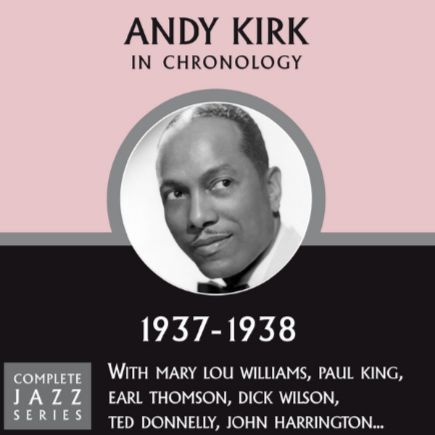Lover, Come Back to Me: des planches de Broadway aux feux du jazz
Composée en 1928 par Sigmund Romberg sur des paroles d’Oscar Hammerstein II, Lover, Come Back to Me voit le jour dans la comédie musicale de Broadway The New Moon, où elle est interprétée pour la première fois par Evelyn Herbert et Robert Halliday.
À l’origine conçue pour un contexte lyrique et dramatique, typique des grandes productions musicales du début du XXe siècle, la chanson se distingue par une intensité émotionnelle marquée et une construction mélodique riche.
C’est avec la seconde adaptation cinématographique de The New Moon, en 1940, que le morceau connaît un regain d’intérêt. Détachée de ses origines scéniques, Lover, Come Back to Me séduit alors le monde du jazz, notamment dans des versions instrumentales au tempo plus soutenu.
Le rythme binaire initial est souvent réinventé en swing vif et énergique, transformant la nostalgie romantique de la version originale en un véritable tourbillon musical. Le refrain, accrocheur et dramatique, sert d’appui idéal aux solistes, qui peuvent y déployer leur inventivité tout en conservant l’empreinte émotionnelle du thème.
L’art du swing raffiné selon Andy Kirk
Enregistrée à New York le 13 décembre 1937 pour le label Decca, la version de Lover, Come Back to Me par Andy Kirk and His Twelve Clouds of Joy, l’une des formations les plus élégantes du Kansas City Sound, un courant où swing et inventivité se rejoignent illustre à merveille. Cet enregistrement témoigne de la vitalité des grands orchestres de l’époque et de leur capacité à transformer un standard de comédie musicale en une œuvre moderne, vibrante et irrésistiblement dansante.
Le morceau, interprété avec la voix chaleureuse et expressive de Pha Terrell, chanteur attitré du groupe, bénéficie d’un arrangement signé Mary Lou Williams, figure centrale de l’orchestre et véritable architecte de son identité sonore, qui insuffle à Lover, Come Back to Me un équilibre parfait entre swing et sophistication.
La section de cuivres d’Andy Kirk, précise et éclatante, dialogue avec les anches dans un tissage orchestral d’une grande richesse. Les riffs puissants alternent avec des passages plus aérés, où le piano de Mary Lou Williams s’impose par ses lignes claires et nerveuses.
Lover, Come Back to Me: de los escenarios de Broadway al fuego del jazz
Compuesta en 1928 por Sigmund Romberg, con letra de Oscar Hammerstein II, Lover, Come Back to Me nació en el musical de Broadway The New Moon, donde fue interpretada por primera vez por Evelyn Herbert y Robert Halliday.
Concebida originalmente en un contexto lírico y dramático, característico de las grandes producciones musicales de principios del siglo XX, la canción se distingue por su intensidad emocional y su riqueza melódica.
Fue con la segunda adaptación cinematográfica de The New Moon, en 1940, cuando la pieza recobró notoriedad. Alejada de sus orígenes teatrales, Lover, Come Back to Me comenzó a seducir al mundo del jazz, especialmente en versiones instrumentales de tempo más ágil.
El ritmo binario original fue a menudo transformado en un swing vibrante y enérgico, que convierte la nostalgia romántica de la versión inicial en un verdadero torbellino musical. El estribillo, cautivador y dramático, sirve de base perfecta para que los solistas desplieguen su creatividad sin perder la intensidad emocional del tema.
El arte del swing refinado según Andy Kirk
Grabada en Nueva York el 13 de diciembre de 1937 para el sello Decca, la versión de Lover, Come Back to Me interpretada por Andy Kirk and His Twelve Clouds of Joy, una de las formaciones más elegantes del Kansas City Sound —corriente donde el swing y la inventiva se entrelazan con naturalidad—, ilustra a la perfección ese equilibrio. Esta grabación refleja la vitalidad de las grandes orquestas de la época y su capacidad para transformar un estándar de comedia musical en una obra moderna, vibrante e irresistiblemente bailable.
La pieza, interpretada con la voz cálida y expresiva de Pha Terrell, vocalista del grupo, cuenta con un arreglo firmado por Mary Lou Williams, figura central de la orquesta y auténtica arquitecta de su identidad sonora, que infunde en Lover, Come Back to Me una armoniosa fusión entre swing y sofisticación.
La sección de metales de Andy Kirk, precisa y brillante, dialoga con las maderas en un tejido orquestal de gran riqueza. Los riffs enérgicos se alternan con pasajes más ligeros, donde el piano de Mary Lou Williams destaca por sus líneas claras, nerviosas y llenas de vitalidad.
Lover, Come Back to Me: dai palcoscenici di Broadway al fuoco del jazz
Composta nel 1928 da Sigmund Romberg su testo di Oscar Hammerstein II, Lover, Come Back to Me nasce nel musical di Broadway The New Moon, dove viene eseguita per la prima volta da Evelyn Herbert e Robert Halliday.
Originariamente pensata per un contesto lirico e drammatico, tipico delle grandi produzioni musicali del primo Novecento, la canzone si distingue per l’intensità emotiva e la ricchezza della sua linea melodica.
È con la seconda trasposizione cinematografica di The New Moon, nel 1940, che il brano conosce una nuova popolarità. Affrancandosi dalle sue origini teatrali, Lover, Come Back to Me conquista l’universo jazzistico, soprattutto in versioni strumentali a tempo più sostenuto.
Il ritmo binario originale viene spesso reinventato in chiave swing, vivace ed energica, trasformando la malinconia romantica della versione iniziale in un vero vortice musicale. Il ritornello, accattivante e drammatico, rappresenta un supporto perfetto per i solisti, che possono liberare la propria inventiva senza tradire l’impronta emotiva del tema.
L’arte dello swing raffinato secondo Andy Kirk
Registrata a New York il 13 dicembre 1937 per l’etichetta Decca, la versione di Lover, Come Back to Me eseguita da Andy Kirk and His Twelve Clouds of Joy —una delle formazioni più eleganti del Kansas City Sound, corrente in cui swing e inventiva si incontrano con naturalezza— ne rappresenta un esempio perfetto. Questa registrazione riflette la vitalità delle grandi orchestre dell’epoca e la loro capacità di trasformare uno standard teatrale in un’opera moderna, vibrante e irresistibilmente danzante.
Il brano, interpretato con la voce calda ed espressiva di Pha Terrell, cantante del gruppo, beneficia di un arrangiamento firmato da Mary Lou Williams, figura centrale dell’orchestra e vera architetta della sua identità sonora, che conferisce a Lover, Come Back to Me un equilibrio ideale tra swing e raffinatezza.
La sezione dei fiati di Andy Kirk, precisa e scintillante, dialoga con le ance in un intreccio orchestrale di grande ricchezza. I riff potenti si alternano a passaggi più ariosi, dove il pianoforte di Mary Lou Williams si impone con linee limpide, energiche e vibranti.
Lover, Come Back to Me: from the Broadway stage to the fire of jazz
Composed in 1928 by Sigmund Romberg with lyrics by Oscar Hammerstein II, Lover, Come Back to Me debuted in the Broadway musical The New Moon, where it was first performed by Evelyn Herbert and Robert Halliday.
Originally designed for a lyrical and dramatic setting, in the style of early 20th-century musical theater, the song stands out for its emotional intensity and richly crafted melody.
It was with the second film adaptation of The New Moon in 1940 that the piece regained prominence. Freed from its theatrical roots, Lover, Come Back to Me began to captivate the jazz world, especially through faster-paced instrumental versions.
The original binary rhythm has often been reimagined as lively, energetic swing, transforming the romantic nostalgia of the original into a whirlwind of musical joy. The chorus, catchy and dramatic, offers the perfect foundation for soloists to unleash their creativity while preserving the emotional essence of the theme.
The art of refined swing according to Andy Kirk
Recorded in New York on December 13, 1937, for the Decca label, Andy Kirk and His Twelve Clouds of Joy’s version of Lover, Come Back to Me—one of the most elegant ensembles of the Kansas City Sound, where swing and inventiveness meet effortlessly—beautifully exemplifies this balance. The recording captures the vitality of the great orchestras of the era and their ability to transform a musical theater standard into a modern, vibrant, and irresistibly danceable work.
The piece, performed with the warm and expressive voice of Pha Terrell, the group’s vocalist, features an arrangement by Mary Lou Williams, the orchestra’s central figure and true architect of its sound identity, who brings to Lover, Come Back to Me a perfect blend of swing and sophistication.
Andy Kirk’s brass section, precise and radiant, converses with the reeds in a richly textured orchestral weave. Powerful riffs alternate with lighter passages, where Mary Lou Williams’s piano stands out through its clear, driving, and elegant lines.


